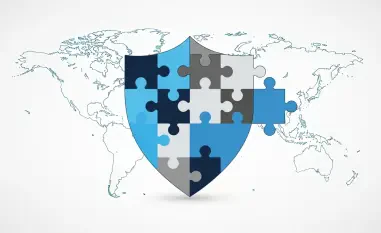In today’s rapidly evolving digital landscape, the importance of cybersecurity cannot be overstated. As organizations increasingly embrace advanced technologies like artificial intelligence (AI), machine learning (ML), and cloud computing to drive digital transformation, they inevitably expose themselves to a myriad of cybersecurity risks. These risks have the potential to compromise organizational operations, financial stability, and reputation. This necessitates a proactive approach to cybersecurity, integrating robust measures that can adequately protect against ever-evolving threats. This article delves into the critical aspects of strengthening cybersecurity in this age of digital transformation.
The Dual-Edged Nature of Technological Advancement
The advancements brought about by AI, ML, and cloud computing have undeniably driven innovation and operational efficiency within organizations across various sectors. These technologies have revolutionized how businesses function, enabling enhanced data analysis, automation of tasks, and scalable infrastructure solutions. However, this integration of advanced technologies is not without its downsides. Alongside the many benefits, these technologies introduce new vulnerabilities that can be exploited by cybercriminals. For instance, AI and ML systems are only as good as the data they are trained on, making them susceptible to data poisoning attacks. Similarly, cloud computing, while providing flexible and cost-effective solutions, can be exploited if not properly configured and secured.
As organizations forge ahead with digital transformation, they must strike a delicate balance between leveraging the benefits of these technologies and ensuring comprehensive cybersecurity measures are in place. The sophistication of modern cybercriminals cannot be underestimated. They continuously evolve their tactics, exploiting weaknesses in both technology and human behavior to achieve their malicious objectives. Smaller and younger organizations are particularly vulnerable, as they may lack the resources and expertise needed to guard against these escalating threats. Nevertheless, the urgency for even these entities to invest in cybersecurity is critical, as failure to do so could result in catastrophic operational and financial impacts.
Building a Robust Cybersecurity Framework
For an organization to effectively manage the myriad of cyber threats it faces, establishing a robust cybersecurity framework is paramount. This foundational step requires a thorough assessment of existing cybersecurity risks and vulnerabilities. Organizations must take a comprehensive approach, scrutinizing the tools and technologies they are currently using, as well as how employees interact with these technologies. Furthermore, an understanding of the external threat actors targeting the organization is essential to anticipate potential attacks and strengthen defenses accordingly.
Evaluating the security of existing technologies and tools is a critical component of this assessment. Ensuring that these tools are up-to-date and properly configured can mitigate many potential risks. Regular updates and patches are vital in closing security gaps that could otherwise be exploited by cybercriminals. Additionally, the assessment must consider user behavior, as human error or negligence can introduce significant vulnerabilities. Providing adequate training and creating awareness about cybersecurity best practices can help in reducing these human-related risks. By addressing both the technological and human aspects of cybersecurity, organizations can develop a comprehensive risk mitigation strategy.
Crafting Clear Cybersecurity Policies
The creation and enforcement of clear cybersecurity policy frameworks play a vital role in maintaining a secure organizational environment. These policies should encompass comprehensive guidelines and best practices that employees and management can follow to uphold cybersecurity standards. Drawing inspiration from established international standards—such as those from the International Organization for Standardization (ISO) and the National Institute of Standards and Technology (NIST)—organizations can develop policies that not only defend against cyberattacks but also ensure effective incident response and recovery strategies.
Such policies should also ensure compliance with relevant data privacy and protection laws. With the increasing importance of data in the digital age, laws like the General Data Protection Regulation (GDPR) and the California Consumer Privacy Act (CCPA) require organizations to take data protection seriously. By aligning with these global best practices and regulatory standards, organizations can better protect their digital assets and maintain stakeholder trust. Implementing these policies effectively requires ongoing training and awareness programs to ensure that all members of the organization understand their roles and responsibilities in maintaining cybersecurity.
Addressing Human Vulnerabilities
Despite the array of sophisticated technologies available today, human behavior remains one of the most significant vulnerabilities in cybersecurity. Cybercriminals often exploit these human weaknesses through tactics such as phishing scams, malware distribution, and ransomware attacks. These malicious activities prey on an individual’s lack of awareness or susceptibility to deceptive practices, causing potentially severe damage to organizational data and operations. Therefore, educating employees about these threats is a crucial element in an organization’s cybersecurity strategy.
Fostering a culture of security within the organization can significantly reduce the likelihood of successful cyberattacks. This involves implementing internal guidelines and continuous training programs designed to help employees recognize potential risks, identify threats, and understand appropriate response procedures. Regular training sessions, simulations, and updates on the latest cyber threats can equip employees with the knowledge needed to avoid common pitfalls and take proactive steps in safeguarding organizational data. By addressing human vulnerabilities through education and awareness, organizations can fortify their overall cybersecurity posture.
The Ethical Dimension of Cybersecurity
Beyond the immediate financial and operational impacts, cybersecurity breaches can have profound implications for an organization’s reputation. Trust is a critical component in relationships with customers, business partners, and stakeholders. A breach can erode this trust, leading to a loss of confidence and loyalty. Therefore, the ethical use of information technology, coupled with adherence to legal standards and privacy considerations, is paramount in maintaining stakeholder confidence and trust.
Prioritizing ethical cybersecurity practices fosters an environment of accountability, transparency, and trust. Organizations must develop and implement policies that ensure the responsible handling of data and the protection of privacy. This ethical approach serves as a safeguard against malicious activities and helps maintain a positive organizational reputation. Furthermore, it aligns with legal and regulatory requirements, thereby reducing the risk of non-compliance penalties and enhancing stakeholder confidence.
Leveraging Advanced Technologies for Cybersecurity
Effective cybersecurity strategies involve a combination of advanced technology, policy management, employee training, and vigilance to ensure comprehensive protection. Adopting these measures not only safeguards the organization but also fosters trust among clients and stakeholders, ultimately contributing to long-term business success. Through a precise blend of innovation and caution, organizations can navigate the complex digital landscape securely.













